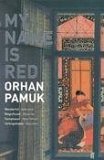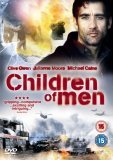The White Castle … My Name is Red … Children of Men … Автобус 13th of January, 2007 POST·MERIDIEM 09:05
This entry is an entry of reviews. And Soviet bus stops. Yes, I know that a disadvantage of my omnivorous interests is that you’re probably not that interested in all of what I’m writing; but I fear were I to limit myself to a particular subject area, there would be even less to read here.
The White Castle, Orhan Pamuk: Written from the perspective of an Italian taken prisoner and made slave and personal confidant of his physical Doppelgänger in Ottoman Istanbul, the book gives an insight into that society I hadn’t come across in my previous reading. For example; when you’re a slave, it’s a relatively natural state to do what you’re told, not remotely energetically or carefully. And as everyone who’s done something relatively complicated for a living knows, such work done carelessly and listlessly is almost valueless—and the work this educated Italian slave had to do was relatively complicated. The book is as self-consciously literary as you’d expect from a Nobel prize in Literature winner, and it also does the post-modern thing adequately, though not as deftly as Umberto Eco manages.It is short, too, which is nice when you have a stack of books in various languages, only one of which you can read quickly, on your work table. Together with work for money, diverting work for free, catching up with friends ... okay, not everyone has that exact combination, but everyone is short of time, I fear :-( .
My Name is Red, Orhan Pamuk: A murder mystery set in the community of miniaturists—the people who drew those cute, cartoonish illustrations to books in the Islamic world—in the Istanbul of 1591. One thing that struck me about the story, or rather the style and context within which the story was told, was how many things linked Ottoman Turkey with Persia and Mogul India and the rest of dar al Islam; it really was a mutually communicative network of cultures, a Kulturbund as John R. PerryI find the culture of the miniaturists has lots of similarities with the culture of software developers; a conservatism, an adherence to norms established in the past because they were associated with success, when it’s clear to the critical thinker that those who had success with that particular combination of techniques owed it to a subset of them, and the strife over the non-essential techniques are thus comical. (And okay, if your standard of proof is high, it’s not that clear that the techniques in question are non-essential.) And of course, there’s a love story, and I like the way he wrote it; the same idiotic people of every real life interaction and every soap opera, in this other place and other world.
The Children of Men, film, 2006: Set in Britain in 2027, in a context where no child has been born since 2009. Britain is doing its general competence thing quite well, as the rest of the world breaks down (though I am bemused at the implication, from a German-speaking pensioner being herded into a cage, that Germany has broken down before Britain). The main character is played by Clive Owen whom I like immensely in this role, in contrast to the Amazon.com reviews of the central character; the sort of person who puts a shot of whiskey into the coffee bought on the way to work, while still holding down the (moderately interesting) job, is my sort of person.Julianne Moore is beautiful, and the film in general is more realist—and thus more to my taste—than lots of other science fiction; I wonder how the cars will look to people in twenty years’ time, but at least they went to the trouble of modifying them so they don’t look like they’re from 2006. And I like the ending. So, yeah, watch the film if you have that sceptical spirit, keep the fuсk away if you don’t.
The Soviet Roadside bus-stop: As they say,
For the most part Soviet architecture and design is remembered for its heavy block buildings and functionally Spartan designs. Its overpowering desire for conformity left little room for individual creative freedom. A notable exceptions to this is in the transportation sector. One can admire this creativity in the Metro stations of cities like Moscow and Tashkent where the coldness and sterility of typical soviet urban architecture is abandoned and costs are not spared as creative freedom is unleashed. While many of us are aware of the elaborate splendor of the Moscow underground, it is easy to overlook the phenomenon of the common roadside bus stop as an example of soviet art and design letting loose and becoming a little weird and crazy.Go have a look; they’re super-diverting.
Word of the day: автобус is Tajik for ‘bus,’ from the Latin via Russian.
Ste, yeah, as I understand it slavery in the Old World has mostly been a by-product of wars waged for other reasons. More profit to be made by selling prisoners than killing them or feeding them. Interestingly enough, in real terms slave prices seem to have been stable since antiquity. (1 male slave = 4.7872 manual workers pa = 0.45 horses)
It is a shame that no-one seems to be maintaining the bus stops and they’re falling into disrepair, I have to say.
Interesting the comparitive cost in Slave / Horse prices, I wonder what the comparisson in associated costs in terms of feed, housing, medical care, escape prevention and so forth looks like.
As to the bus stops, it is an awful shame that they are being neglected, I guess they aren’t high on anyone’s priority list.
Comments are currently disabled.



As far as slavery goes, lack of motivation is a major problem, short of beating or executing listless slaves there’s not much you could do to prevent it, and as a source of labour slaves aren’t actually that cheap. For example, a sick slave still needs to be fed and housed, wether or not they are able to earn their keep, killing or releasing a worthless slave then means incurring the cost of purchasing a replacement, to say nothing of the cost to an economy of fighting wars or paying slavers to travel great distances to capture slaves.
Paid labour is economically speaking much more profitable, which is why slaves historically were kept generally kept where in areas where there was no available population large enough to support the local workforce requirement, (Southern State cotton plantations for example or in Ancient Society where a high percentage of the available workforce was engaged in soldiering). There are exceptions, where slaves are kept as status symbols or to populate harems.
I also really like the Soviet Bus stops, there’s something oddly Greek / Mediteranian about some of them, and something Islamic about others. In fact it’s the sort of thing you’d expect in Cyprus or somewhere. Very cool